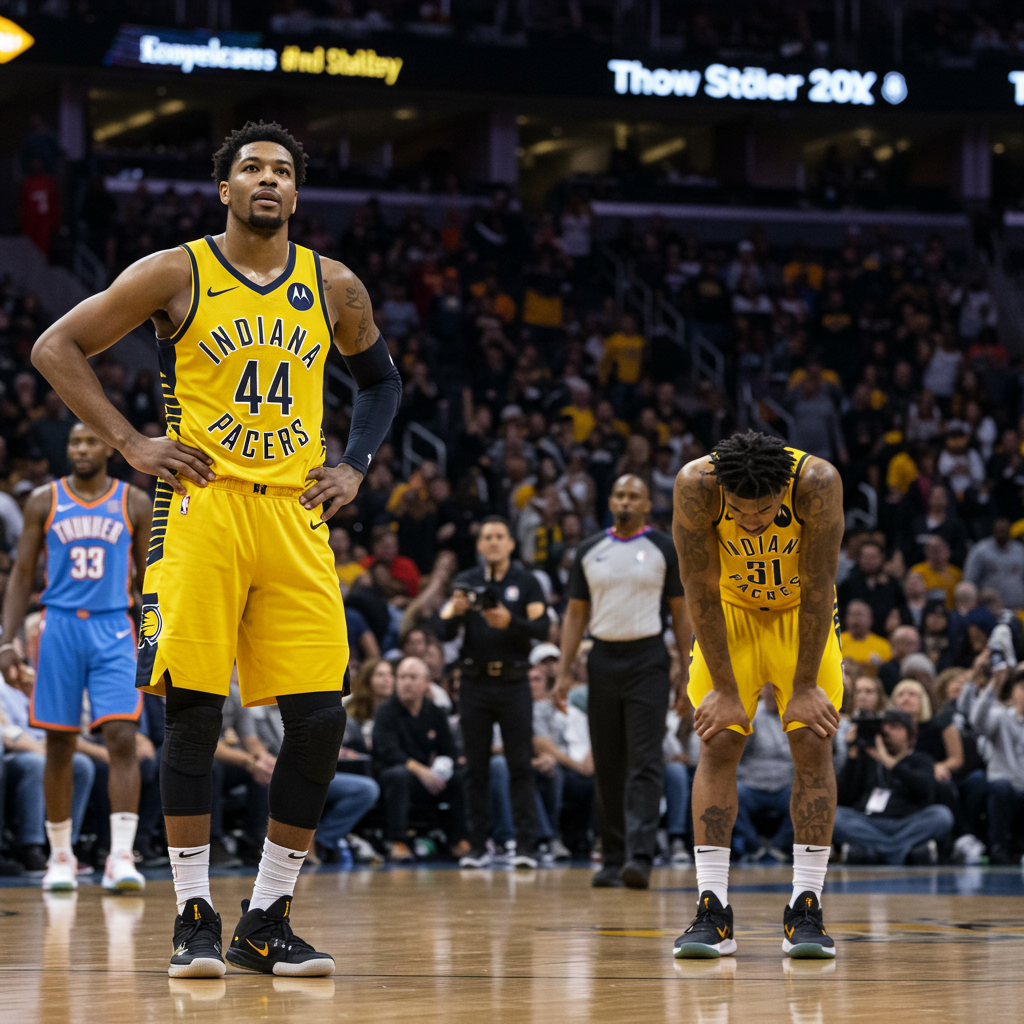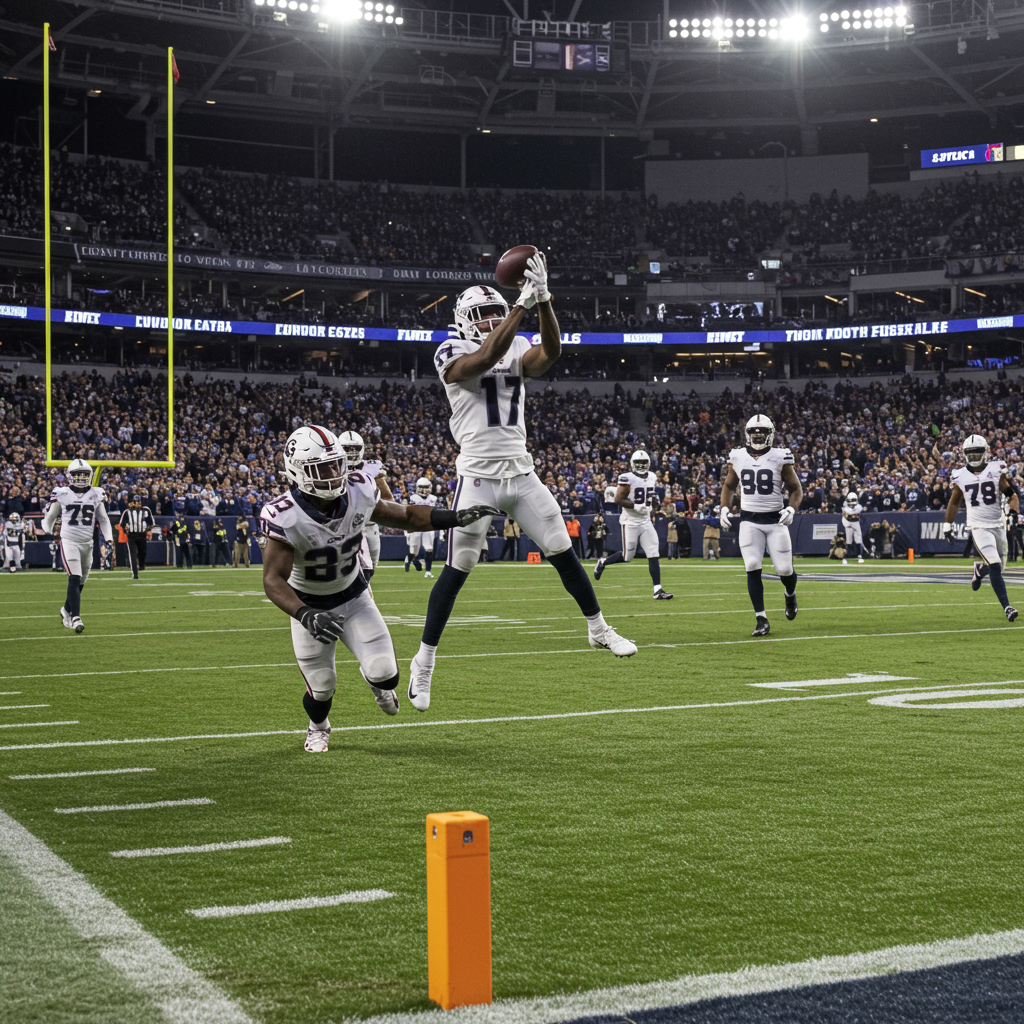OKLAHOMA CITY — The Indiana Pacers arrived in the NBA Finals as significant underdogs against the formidable Oklahoma City Thunder, a team lauded for its historical regular-season efficiency and top-ranked defense. While exceeding expectations by reaching this stage, the Pacers have been plagued by a recurring theme: blowing opportunities that could have shifted the series narrative.
Game 5’s 120-109 loss to the Thunder wasn’t as dramatic a collapse as the double-digit lead surrendered in Game 4, but it reinforced the feeling that Indiana’s championship window might be closing. Now down 3-2, the Pacers face elimination, and key issues exposed in this series, particularly in Game 5, make it hard not to reflect on what could have been.
A Series of Missed Chances
From failing to protect a significant lead in Game 4 to the crucial errors in Game 5, the Pacers have consistently struggled to capitalize on pivotal moments against the Thunder. This pattern of faltering when it matters most has left them on the brink, facing an opponent performing at an historically elite level.
The Tyrese Haliburton Enigma
Perhaps the most concerning issue is the health and performance of star point guard Tyrese Haliburton. Haliburton reinjured his right leg – the same area that troubled him in Game 2 – early in Game 5. He visibly labored through the remainder of the game, appearing slow and unsure as he left the arena. Post-game, his assessment of his health was blunt: “No clue, man, honestly,” although he insisted he would play in Game 6 if he could walk.
His struggles were evident long before the injury, but the discomfort undeniably hampered him. Haliburton finished Game 5 with an uncharacteristic four points on 0-of-6 shooting, adding seven rebounds, six assists, three turnovers, and a minus-13 rating. This performance stood in stark contrast to the dominance of his counterpart, Shai Gilgeous-Alexander, who is averaging a remarkable 32.4 points, 5 assists, and 2.4 steals in the series, performing at a level previously seen only from legends like Michael Jordan and LeBron James in the playoffs.
Carlisle noted Haliburton wasn’t moving well and was tired, even considering sitting him at halftime, but acknowledged the difficulty of keeping a player out of a Finals game unless truly injured.
Haliburton’s impact is complex. While he is the Pacers’ offensive engine, their system functions as a high-paced, low-usage “ecosystem” rather than a traditional “star system” centered on one high-volume scorer. Against the Thunder’s “whirling, suffocating” defense, which employs multiple elite defenders like Lu Dort and Cason Wallace to deny him space and pick him up early, Haliburton has faced immense pressure. His struggles in Game 2 against this defense, where he had more turnovers than made baskets early on, foreshadowed the challenges he’d face, intensified by injury in Game 5. He has acknowledged needing to play more “off the pitch” to counteract OKC’s ability to “load up” on ball screens.
Questionable Rotations: The T.J. McConnell Factor
Beyond Haliburton’s struggles, head coach Rick Carlisle’s rotation choices drew scrutiny. Veteran guard T.J. McConnell provided a significant spark in the third quarter of Game 5, scoring 13 points in seven minutes and effectively cutting into the Thunder’s lead by navigating their tough defense.
However, despite his clear impact and Haliburton’s difficulties, McConnell sat for a crucial stretch of the fourth quarter, from the 10:50 mark until just 3:23 remained. Carlisle explained that McConnell was “very tired” and showed signs of fatigue earlier in the period. Nevertheless, in a game where few things were working for Indiana’s offense, the decision to bench a player finding success against the league’s best defense felt like a costly misstep.
The Crippling Turnover Epidemic
According to Carlisle, the single biggest factor in Game 5 wasn’t Haliburton’s injury or McConnell’s minutes – it was the turnovers. The Pacers committed a staggering 23 turnovers, leading directly to 32 points for the Thunder. Carlisle was emphatic post-game, stating, “Nobody is asking about turnovers… That’s the game.”
This has been a series-long problem. Indiana is averaging 18.6 turnovers per game compared to Oklahoma City’s 13.4. The Thunder’s defense is designed to swarm the ball and generate miscues. Even reliable players like Pascal Siakam, who had just four combined turnovers in the first four games, coughed it up six times in Game 5. Siakam took responsibility but also noted the Thunder “do get away with a lot of reaching,” a testament to their aggressive defense, though he admitted he needed to be better, especially early in the game.
Haliburton echoed the sentiment, acknowledging that while the Thunder are a great defensive team that swarms the ball, many turnovers were “self-inflicted.” He starkly noted that turnovers have been a “big reason why” in all three of their losses.
Facing Elimination
With their backs against the wall for Game 6, the Pacers must overcome these significant hurdles. Haliburton’s injured leg, the need for offensive consistency against a suffocating defense, potentially difficult rotation decisions, and most critically, the persistent turnover problem, all loom large. Against a “historically great” Thunder team playing at peak performance led by a historically impactful SGA, reversing course feels like a monumental task.
As the series hangs precariously, the question of “What if?” lingers. What if Haliburton was fully healthy? What if key opportunities weren’t squandered? What if the turnovers were contained? For the Pacers, the time for reflection on those questions is rapidly approaching, perhaps sooner than they hoped.


